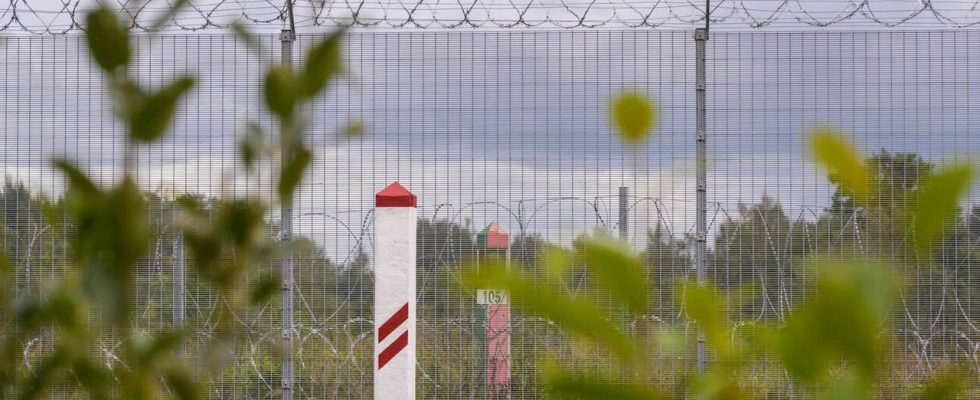For years, tens of thousands of migrants have tried to reach the EU from Belarus. Minsk was able to put pressure on the EU. Latvia responded by building a border fence. It’s almost finished now – and there are already gaps.
Winter has Latvia firmly in its grip. Border guard officer Vladimirs Šersts and his colleagues are driving through the snow in the car, surrounded by nothing but coniferous trees. Your destination out here in the middle of the forest: one of the last holes in the border fence with neighboring Belarus.
“We look along the border to see if we can find traces of illegal border crossers. Footprints or something similar that indicate illegal attempts to cross the border,” explains Šersts.
Several layers of barbed wire, comparatively easy to overcome, temporarily plug the approximately 70 meter long gap. Officials can’t find any footprints in the snow there today. Šersts is satisfied.
Smuggling allegations against Minsk
By just before Christmas, 110 kilometers of the fence had already been built. The border that Latvia shares with its authoritarian neighbor Belarus is 172 kilometers long. However, unlike in Poland or Lithuania, there has so far been no continuous physical barrier at the border in the Baltic EU state.
But the situation has been tense for a long time, as Šersts explains: “Illegal attempts to cross the border from Belarus are currently our biggest challenge here. This began in August 2021 and continues to this day.”
Migrants from crisis areas repeatedly try to enter the country via Belarus. In this context, Minsk is accused of not only tolerating illegal border crossings, but also of deliberately smuggling those seeking protection to the border. A political instrument to put pressure on the EU.
Latvia recently reported that last year it prevented more than 13,000 migrants from crossing the EU border from Belarus – almost tripling compared to the same period last year.
“It gives us time to react”
The new fence to the Baltic NATO country is now intended to curb illegal migration. The fence will not be able to prevent all border crossings towards Latvia, Šersts has no illusions – “but it gives us time to react,” he says. “As you can see, we are building a completely new infrastructure along the border with sensors and camera systems. Everything together will help us protect our border.”
The construction of the fence along the waters is expected to be completed by July. Planning work is currently underway on the Daugava River for the construction of six communication towers, access roads and an almost 17-kilometer-long patrol route.
In order to create more capacity and personnel to monitor the border, the government in Riga closed one of the two checkpoints at the border crossing with Belarus last September. The military and police are also currently supporting the checks.
Again and again, reports the Latvian border guard chief, migrants walked the fence to look for unfenced sections.
Border guards interpret footprints in the snow
Guntis Pujāts is head of the state border guard. He reports that fewer migrants have attempted to cross the fence in recent weeks. However, footprints in the snow showed that attempts were still being made: “We have repeatedly observed that large groups of illegal migrants, dozens of people, walk along the fence and look for a place where the fence ends at a river bank.”
Tracking down such groups in good time is also part of Vladimirs Šersts’ job. He assumes that people will continue to try to cross the border: completed sections of the new fence have already been damaged or cut open.
Ann-Brit Bakkenbüll, ARD Stockholm, tagesschau, January 8th, 2024 5:00 p.m

